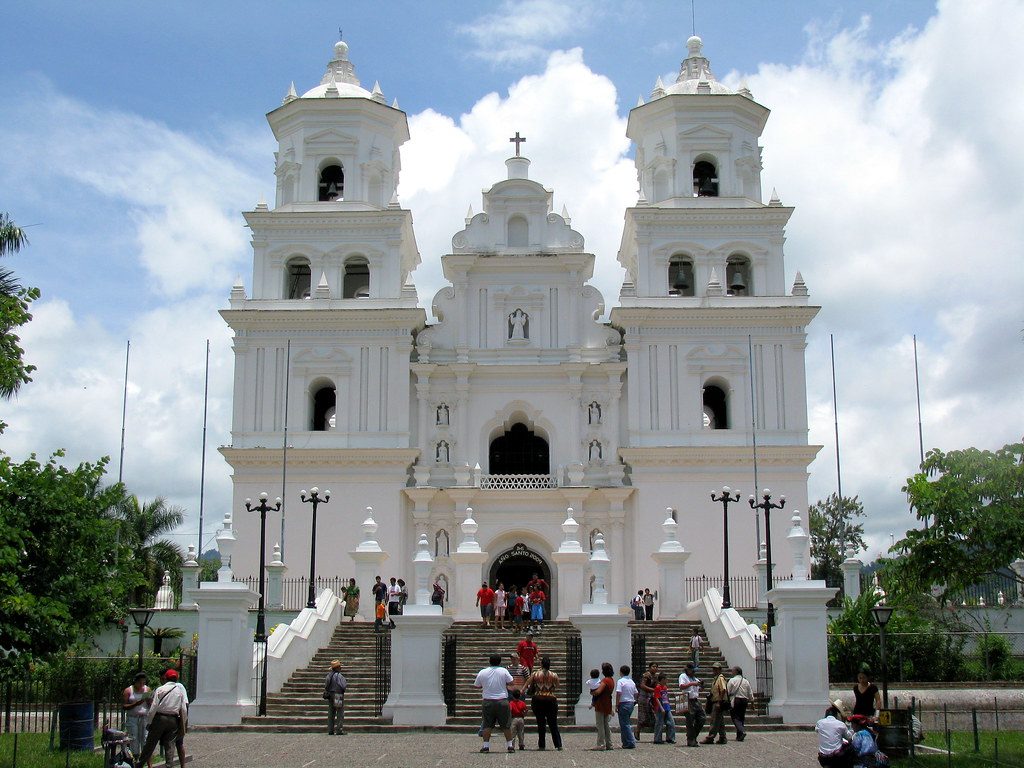Every year, millions of hearts and footsteps turn towards Esquipulas, a vibrant municipality in eastern Guatemala. Their destination? The Basílica de Esquipulas, home to the revered Cristo Negro, or Black Christ. This isn’t just a local devotion; its reach extends across Central America, southern Mexico, and even into communities in the United States, drawing an estimated 5 million pilgrims annually.
A Miracle-Working Image Steeped in History
The story of the Cristo Negro dates back to 1595, when this dark-hued image of Christ was sculpted by Portuguese artist Quirio Cataño. Originally commissioned in 1594 and delivered seven months later, the image arrived in Esquipulas on March 9, 1595, a year to the day after it was commissioned. Its unique dark color, as determined during a reconstruction, is believed to be the result of centuries of exposure to candle smoke and the touch of countless devoted pilgrims.
From its earliest days, the Cristo Negro became known as “El Milagroso Señor de Esquipulas” – the Miraculous Lord of Esquipulas. Testimonies of healing, prosperity, and answered prayers are abundant. Pilgrims share powerful personal stories, like the woman who avoided surgery after praying to the Lord of Esquipulas, or the man whose sight was restored after being blinded by diabetes. These deeply personal accounts fuel the fervent belief that anything asked for with faith will be granted.
The Grand Basilica: A Monument to Faith
The Cristo Negro reposes in the magnificent Basílica de Esquipulas, a truly monumental structure. This grand temple, inaugurated on November 4, 1758, after 22 years of construction initiated by Archbishop Pedro Pardo Figueroa, stands as the largest Catholic temple in Central America and southern Mexico. Unique in the Americas with its four bell towers soaring 50 meters high, it is considered one of the most visited religious sites globally.
The basilica itself is an architectural marvel, featuring three naves, a dome adorned with stained glass, and a long, double-sided stone staircase leading to its entrance. Surrounded by an enormous garden that serves as a park and resting area, it offers a space for pilgrims to find solace after journeying for hours, sometimes even on foot or horseback. The sheer scale of devotion is evident in the often-interminable lines, sometimes stretching outside the basilica, where pilgrims patiently await their few seconds before the venerated image. Many carry candles, leaving them in a designated space upon exiting, symbols of their hopes and prayers.
Esquipulas: More Than Just a Basilica

The municipality of Esquipulas, founded between 1560 and 1570, is a place rich in history and cultural significance, extending beyond the basilica itself. It shares borders with Honduras and El Salvador, and its name, possibly derived from the Nahuatl for “flowery lands,” hints at its natural beauty. Its importance is underscored by its titles: “Capital of Central American Faith” and “Open Door to Peace.”
The city thrives on the tourism generated by its Catholic devotion, but it also holds a place in broader Central American history. Esquipulas was the birthplace of the Esquipulas I and II Peace Accords in the 1980s, which laid the groundwork for peace in the region and inspired Oscar Arias’s Nobel Peace Prize-winning plan. A commemorative monument in the city stands as a quiet testament to these vital agreements.
Other significant sites for pilgrims and visitors include:
- Parroquia de Santiago: The second most important church in Esquipulas, where the Cristo Negro image was first placed between 1600 and 1620 before its transfer to the basilica. This church is the heart of many local Catholic traditions and hosts three religious festivities each month.
- Cerrito de Morola (El Calvario): This hill, also known as El Calvario, features 12 stations mimicking the Via Crucis. Many pilgrims undertake this penitential climb, a testament to their faith and a search for forgiveness.
- La Piedra de los Compadres: A unique natural monument featuring two precariously balanced, five-ton stones. Local legend tells of two compadres (friends who become spiritual kin) who were turned to stone here as punishment for betraying their sacred bond. This site is visited for both its intriguing legend and for indigenous religious rituals.
- Artisan Market: A vibrant hub located next to the basilica, offering everything from religious images and traditional clothing to local sweets and handicrafts, providing pilgrims with tangible memories of their spiritual journey.
A Pilgrimage of Global Recognition
The widespread devotion to the Cristo Negro has received international recognition. In 1961, the Esquipulas sanctuary was elevated to the dignity of a minor basilica by Pope John XXIII, following a petition from Archbishop Mariano Rosell, who cited its religious, cultural, and historical importance. The sanctuary’s care was entrusted to the Benedictine Abbey of Saint Joseph from Louisiana, USA, solidifying its international connections.
Furthermore, the sacredness of Esquipulas has been acknowledged by two global figures:
- Pope Saint John Paul II visited Esquipulas on February 6, 1996, to pray before the image, marking the 400th anniversary of the Cristo Negro’s veneration.
- Mother Teresa of Calcutta visited twice, in 1976 and 1982, and in 1979, she inaugurated and blessed the “Plaza Centroamericana de la Paz” (Central American Peace Plaza), offering a panoramic view of the city.
The Pilgrimage of Esquipulas is more than just a religious event; it’s a profound cultural phenomenon, a testament to enduring faith, and a symbol of unity that transcends borders. Whether seeking a miracle, fulfilling a promise, or simply experiencing a deep spiritual connection, millions find their way to this sacred ground, carrying their hopes and leaving their prayers at the feet of the miraculous Cristo Negro.

